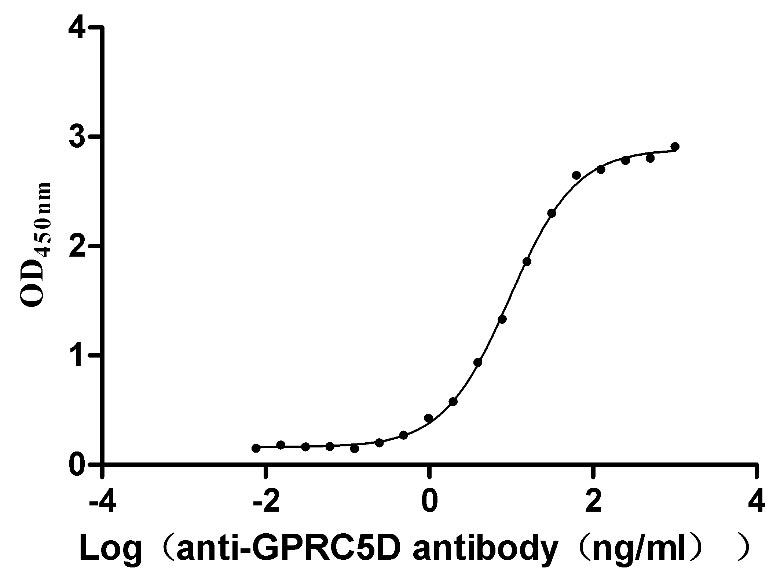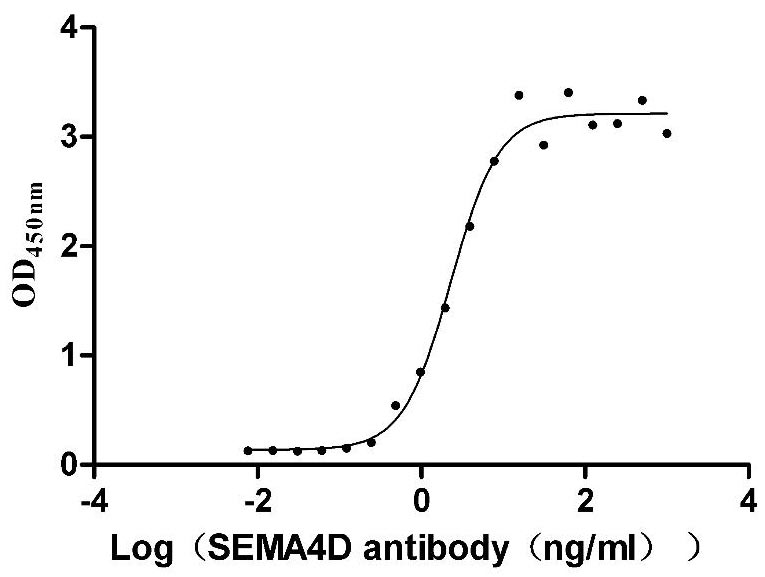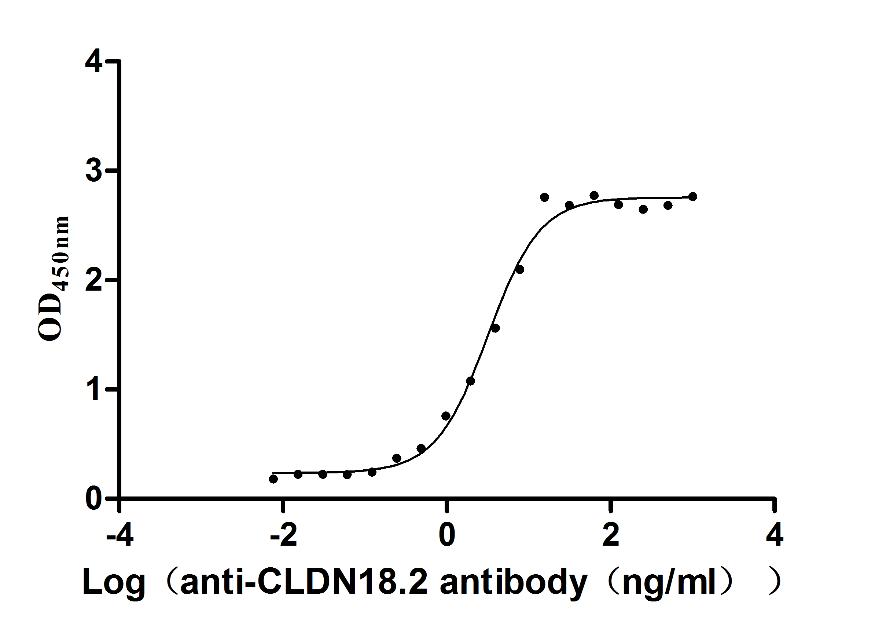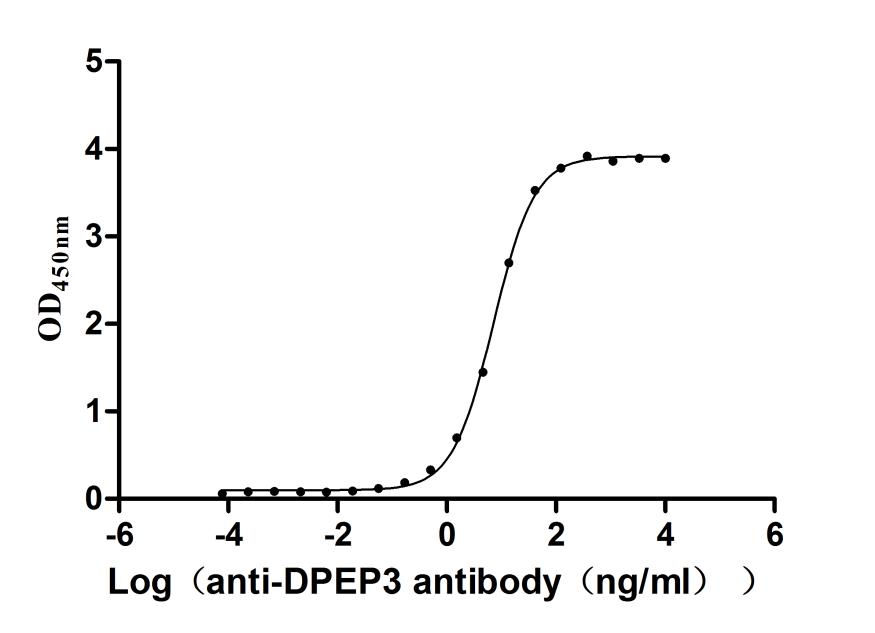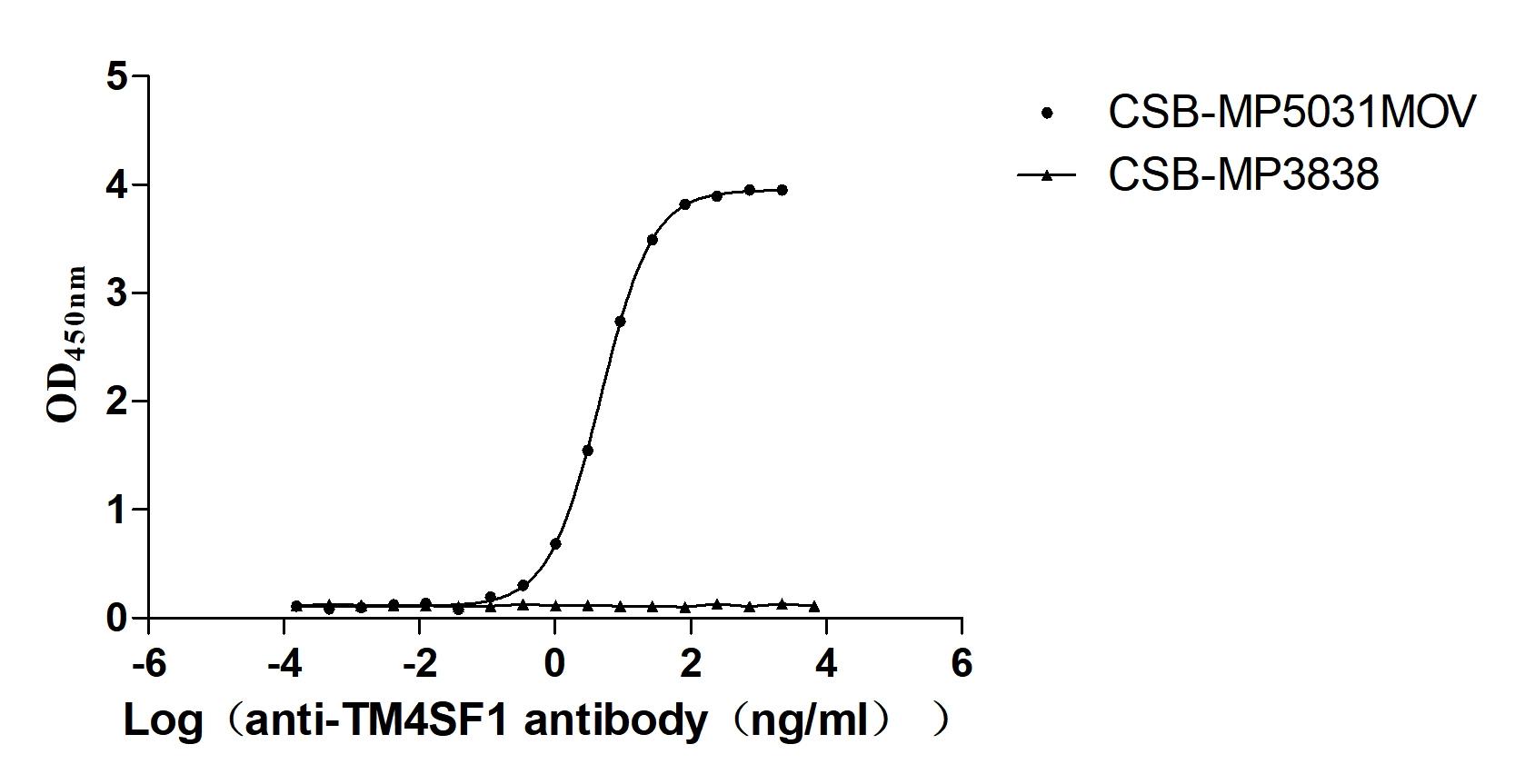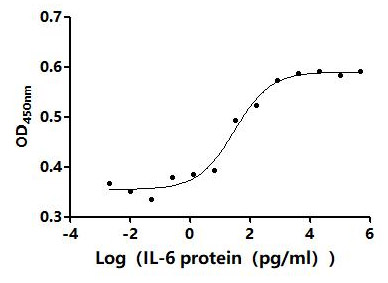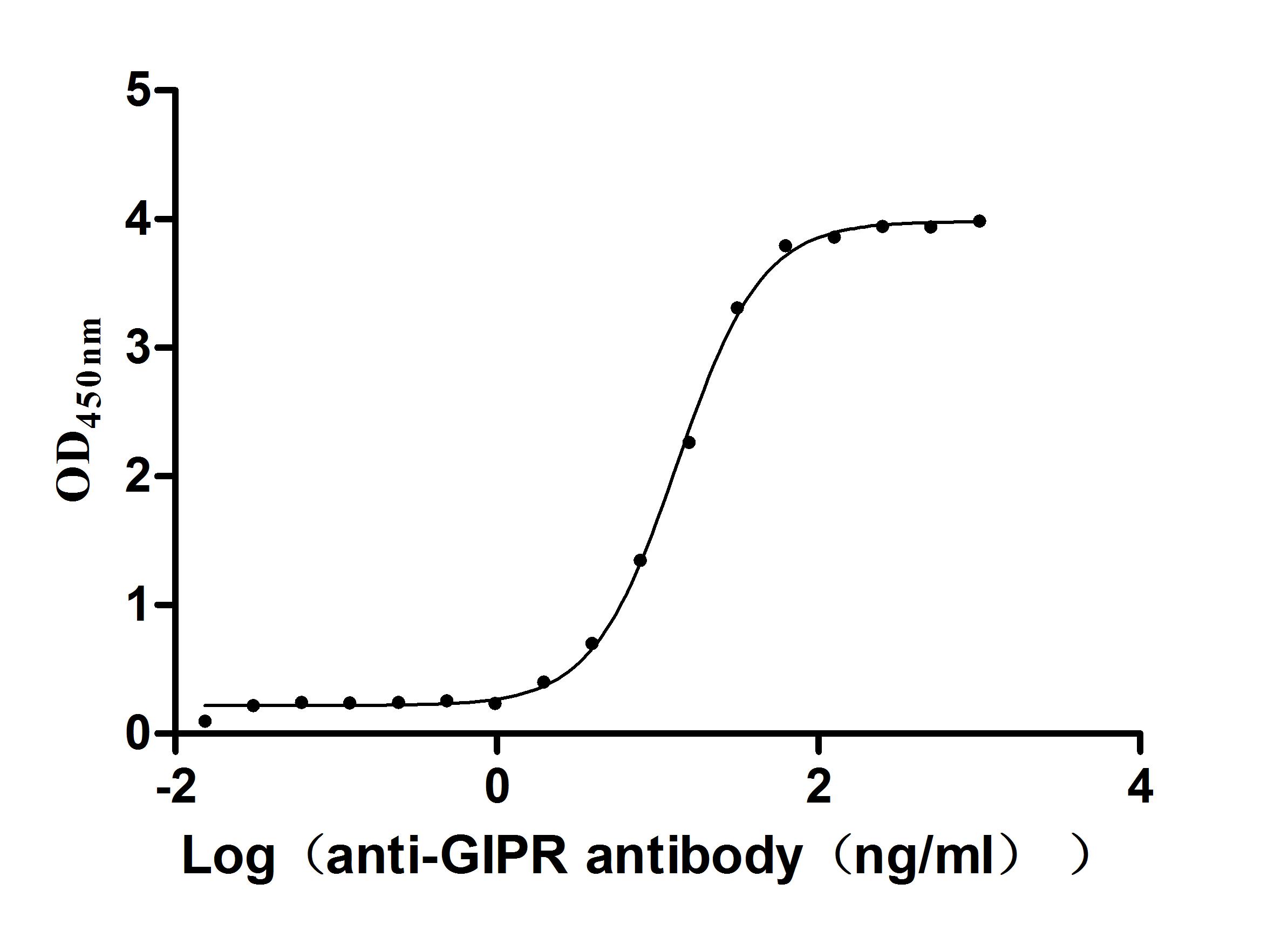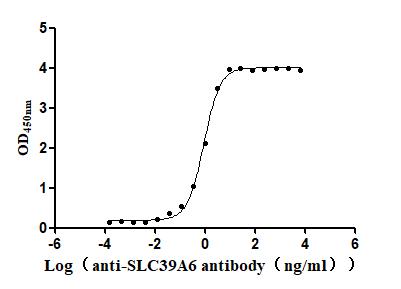Recombinant Mouse Killer cell lectin-like receptor subfamily G member 1 (Klrg1), partial
-
中文名稱:小鼠Klrg1重組蛋白
-
貨號:CSB-YP012472MO1
-
規(guī)格:
-
來源:Yeast
-
其他:
-
中文名稱:小鼠Klrg1重組蛋白
-
貨號:CSB-EP012472MO1-B
-
規(guī)格:
-
來源:E.coli
-
共軛:Avi-tag Biotinylated
E. coli biotin ligase (BirA) is highly specific in covalently attaching biotin to the 15 amino acid AviTag peptide. This recombinant protein was biotinylated in vivo by AviTag-BirA technology, which method is BriA catalyzes amide linkage between the biotin and the specific lysine of the AviTag.
-
其他:
-
中文名稱:小鼠Klrg1重組蛋白
-
貨號:CSB-BP012472MO1
-
規(guī)格:
-
來源:Baculovirus
-
其他:
-
中文名稱:小鼠Klrg1重組蛋白
-
貨號:CSB-MP012472MO1
-
規(guī)格:
-
來源:Mammalian cell
-
其他:
產(chǎn)品詳情
-
純度:>85% (SDS-PAGE)
-
基因名:
-
Uniprot No.:
-
別名:Klrg1; Mafa; Killer cell lectin-like receptor subfamily G member 1; Mast cell function-associated antigen 2F1
-
種屬:Mus musculus (Mouse)
-
蛋白長度:Partial
-
蛋白標(biāo)簽:Tag?type?will?be?determined?during?the?manufacturing?process.
The tag type will be determined during production process. If you have specified tag type, please tell us and we will develop the specified tag preferentially. -
產(chǎn)品提供形式:Lyophilized powder
Note: We will preferentially ship the format that we have in stock, however, if you have any special requirement for the format, please remark your requirement when placing the order, we will prepare according to your demand. -
復(fù)溶:We recommend that this vial be briefly centrifuged prior to opening to bring the contents to the bottom. Please reconstitute protein in deionized sterile water to a concentration of 0.1-1.0 mg/mL.We recommend to add 5-50% of glycerol (final concentration) and aliquot for long-term storage at -20℃/-80℃. Our default final concentration of glycerol is 50%. Customers could use it as reference.
-
儲存條件:Store at -20°C/-80°C upon receipt, aliquoting is necessary for mutiple use. Avoid repeated freeze-thaw cycles.
-
保質(zhì)期:The shelf life is related to many factors, storage state, buffer ingredients, storage temperature and the stability of the protein itself.
Generally, the shelf life of liquid form is 6 months at -20°C/-80°C. The shelf life of lyophilized form is 12 months at -20°C/-80°C. -
貨期:Delivery time may differ from different purchasing way or location, please kindly consult your local distributors for specific delivery time.Note: All of our proteins are default shipped with normal blue ice packs, if you request to ship with dry ice, please communicate with us in advance and extra fees will be charged.
-
注意事項(xiàng):Repeated freezing and thawing is not recommended. Store working aliquots at 4°C for up to one week.
-
Datasheet :Please contact us to get it.
相關(guān)產(chǎn)品
靶點(diǎn)詳情
-
功能:Plays an inhibitory role on natural killer (NK) cells and T-cell functions upon binding to their non-MHC ligands. May mediate missing self recognition by binding to a highly conserved site on classical cadherins, enabling it to monitor expression of E-cadherin/CDH1, N-cadherin/CDH2 and R-cadherin/CDH4 on target cells.
-
基因功能參考文獻(xiàn):
- Treg cell accumulation in intestinal tumours from APC(min/+) mice was exclusively due to the increase in KLRG1(+) GATA3(+) Treg cells. PMID: 28437001
- Although absence of KLRG1 is not enough to increase intestinal Treg cells in KLRG1 knockout mice, KLRG1 ligation reduces T-cell receptor signals and the competitive fitness of individual Treg cells in the intestine. PMID: 28437578
- This finding provides a rationale for the reciprocal expression of KLRG1 and CD103 in different CD8(+) T-cell subsets. PMID: 26014037
- Cytotoxic KLRG1-expressed CD8 effector cells and defective T regulatory cells cause murine autoimmune cholangitis. PMID: 24556277
- KLRG1(+) iNKT cells coexpressing CD49d and granzyme A persisted for several months and displayed a potent secondary response to cognate antigen. PMID: 25118276
- Data indicate that CD103(+)CD8(+) T(RM) cells developed in the skin from epithelium-infiltrating precursor cells that lacked expression of the effector-cell marker KLRG1. PMID: 24162776
- Data indicate that increments of CD8 + effector memory T cells in human and mouse chronic lymphocytic leukemia (CLL)(Emu-TCL1 model) were due to an expansion of the inhibitory killer cell lectin-like receptor G1 (KLRG1) expressing cellular subset. PMID: 24022692
- Despite their differences, KLRG1+ and KLRG1- Treg cells proved similarly potent in suppressing experimental autoimmune encephalomyelitis. PMID: 23436224
- KLRG1(-/-) mice had a significant survival extension after Mycobacterium tuberculosis infection compared to wild-type controls, and maintained a significantly lower level of pulmonary bacterial load throughout chronic infection. PMID: 23340310
- CD8+ T cells lacking Id2 do not generate a robust terminally differentiated killer cell lectin-like receptor G1 (KLRG1hi) effector population, but display a cell-surface phenotype and cytokine profile consistent with memory precursors. PMID: 23325888
- The lower inhibitory capacity of mKLRG1 compared with hKLRG1 can thus be rationalized by a decreased proportion of dimeric entities, which can be pinpointed to a single amino acid. PMID: 22684915
- KLRG1high-expressiong CD8 T cells isolated from the lung during the peak of influenza infection could long survive in vitro and participate in a recall response to influenza virus infection upon adoptive transfer. PMID: 23089397
- The KLRG1+NKG2A+ positive phenotype correlates with protective efficacy for generating effector and proliferative memory responses from a pool of CD8 T cells during persistent gamma-herpesvirus 68 infection. PMID: 21346231
- Interleukin-2-activated natural killer cells interact with tumor necrosis factor-alpha-stimulated endothelial cells to induce their proliferation and promote angiogenesis through a mechanism involving alpha4beta7 integrin and KLRG1. PMID: 20971926
- KLRG1 does not play a deterministic role in the generation & functional characteristics of NK & T-cell subsets. The inhibitory potential of KLRG1 in mice is weak. Strong activation signals during viral infections may override the inhibitory signal. PMID: 20201037
- Both pathogenic and nonpathogenic in vivo activation of NK cells induces cell surface expression of KLRG1, while in vitro studies show that engagement of the receptor on a transfected NK cell line inhibits cytokine production and cell-mediated cytoxicity. PMID: 11884419
- Expression of KLRG1 on CD8+ and CD4+ T cell subsets isolated from naive animals appears to be largely restricted to T cells that exhibit a memory phenotype. PMID: 12794113
- MafA is differentially expressed in beta-cells where it regulates insulin gene expression. PMID: 14765989
- repetitive and persistent antigen stimulation leads to an increase in KLRG1 expression of virus-specific CD8+ T cells PMID: 16140789
- KLRG1 ligation by E-, N-, or R-cadherins may regulate the cytotoxicity of killer cells to prevent damage to tissues expressing cadherins. PMID: 16461340
- Upon phosphorylation of the immunoreceptor tyrosine-based inhibitory motif tyrosine, KLRG1 recruits both SHIP-1 and SHP-2 but not SHP-1. PMID: 17307799
- NK cells acquire KLRG1 on their surface during development, and this expression correlates with functional distinctions from other peripheral NK cells in vivo. PMID: 17404256
- IL-12 signaling drives CD8+ T cell IFN-gamma production and differentiation of KLRG1+ effector subpopulations during Toxoplasma gondii Infection. PMID: 18424713
- KLRG1 formed multimeric protein complexes in T cells in addition to the previously described mono- and dimeric molecules PMID: 19009530
- KLRG1 recognizes the N-terminal homodimeric interface of domain 1 of E-cadherin and binds only the monomeric form of E-cadherin to inhibit the immune response. PMID: 19654330
- our results provide novel insights on how KLRG1 and E-cadherin interactions are integrated to differentially regulate not only KLRG1(+) cells, but also E-cadherin-expressing cells, such as dendritic cells. PMID: 19855082
顯示更多
收起更多
-
亞細(xì)胞定位:Cell membrane; Single-pass type II membrane protein.
-
組織特異性:Expressed specifically on natural killer (NK) cells and activated CD8 T-cells. Not detected in spleen, thymus, lymph node, testis, brain or kidney. Not detected on mast cell lines, bone marrow-derived mast cells, or peritoneal mast cells.
-
數(shù)據(jù)庫鏈接:
Most popular with customers
-
Recombinant Human G-protein coupled receptor family C group 5 member D (GPRC5D)-VLPs (Active)
Express system: Mammalian cell
Species: Homo sapiens (Human)
-
Recombinant Macaca mulatta Semaphorin-4D isoform 1 (SEMA4D), partial (Active)
Express system: Mammalian cell
Species: Macaca mulatta (Rhesus macaque)
-
Recombinant Macaca fascicularis Claudin 18.2 (CLDN18.2)-VLPs (Active)
Express system: Mammalian cell
Species: Macaca fascicularis (Crab-eating macaque) (Cynomolgus monkey)
-
Recombinant Human Dipeptidase 3(DPEP3), partial (Active)
Express system: Mammalian cell
Species: Homo sapiens (Human)
-
Recombinant Macaca fascicularis Transmembrane 4 L6 family member 1 (TM4SF1)-VLPs (Active)
Express system: Mammalian cell
Species: Macaca fascicularis (Crab-eating macaque) (Cynomolgus monkey)
-
-
Recombinant Macaca fascicularis Gastric inhibitory polypeptide receptor (GIPR), partial (Active)
Express system: yeast
Species: Macaca fascicularis (Crab-eating macaque) (Cynomolgus monkey)
-
Recombinant Macaca fascicularis Zinc transporter ZIP6 isoform X1(SLC39A6),partial (Active)
Express system: Baculovirus
Species: Macaca fascicularis (Crab-eating macaque) (Cynomolgus monkey)


